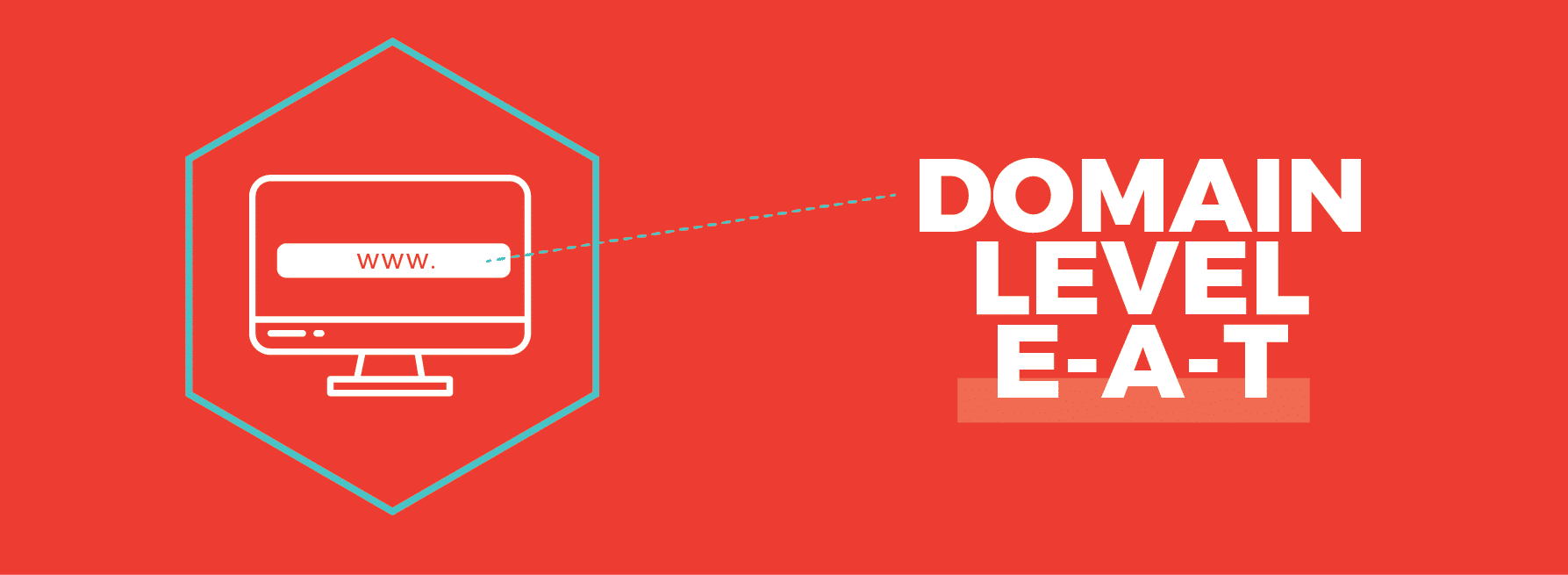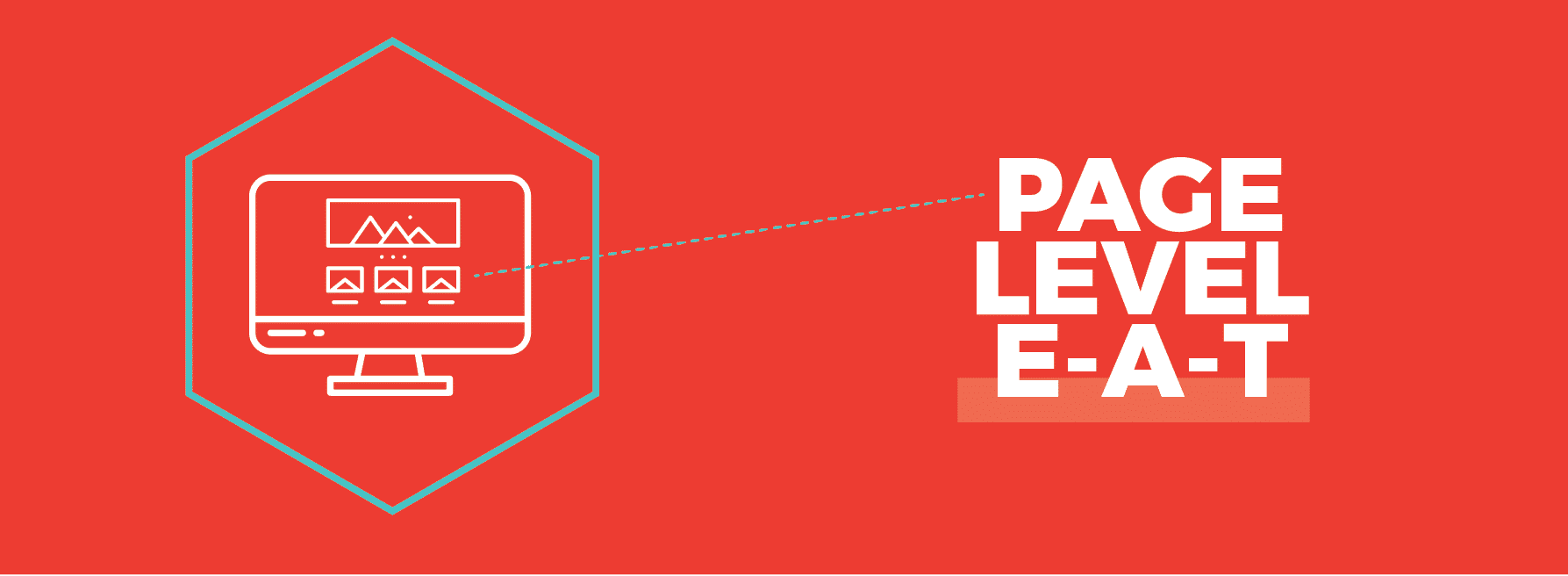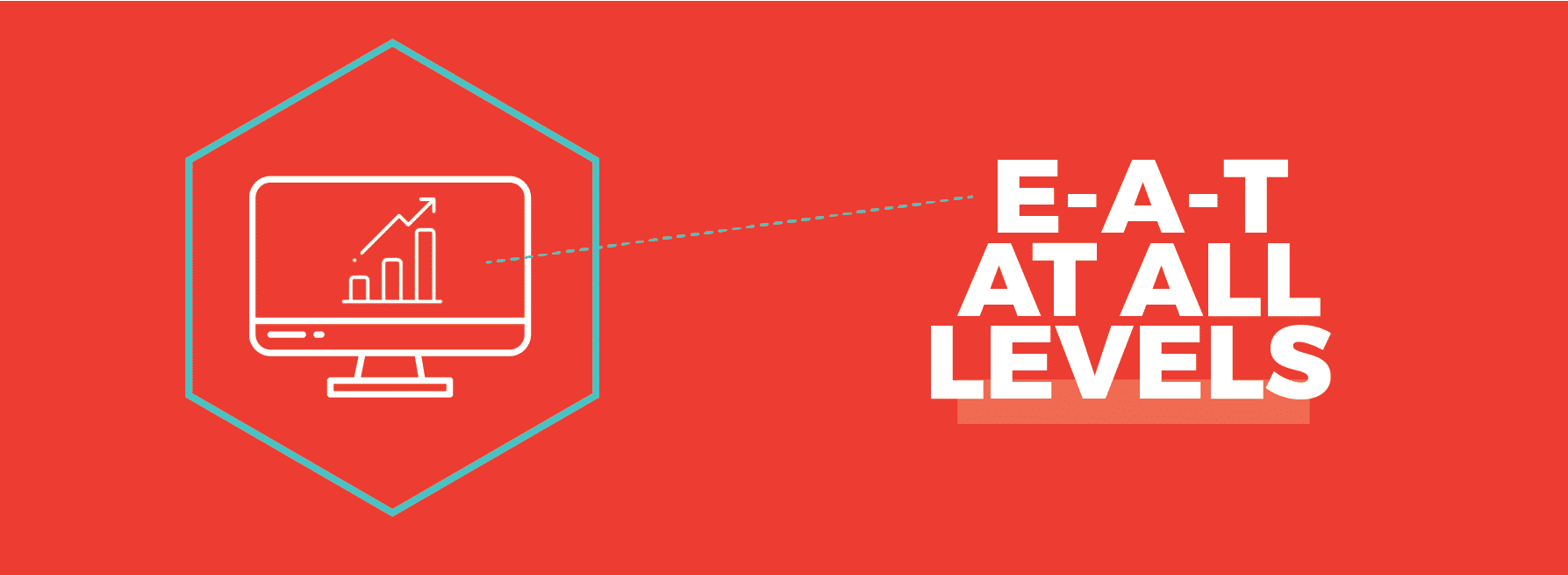If your website falls in the category of YMYL you already know that creating E-A-T content is a must. However, E-A-T applies to all types of websites.
Every brand starts from the bottom up. But no matter how far along your business has come, you can always improve your rank, traffic, and, in turn, profit by building E-A-T assets. How can you get started? When it comes to leveraging E-A-T strategies, you have to consider three main areas of action:
- Improving E-A-T at the domain level
- Producing E-A-T content at the page level
- Boosting E-A-T objectives by building your brand and taking off-site action
Your individual content pages won’t perform well on Google SERPs if your domain has SEO issues, and vice versa. Google’s ranking algorithms take both factors into account, as do typical Internet users when they land on any given content page.
Domain-level and page-level E-A-T have equal value, and they continuously feed off one another. For this reason, SEOs and other digital marketers need to focus equally on both and should regularly improve both sides, instead of targeting one strategy and then the other.

E-A-T at the Domain Level
At the domain level, exhibiting expertise, authority, and trustworthiness will make your website a more worthy link target. When other high-authority domains link to your website, they vouch for your credibility and pass their link equity to you.
For link building purposes, improving the E-A-T of your site will naturally attract more links and boost your Google ranking. To improve domain-level E-A-T, it’s helpful to consider each of the three E-A-T components individually:
Expertise
How your company establishes its expertise will differ based on its branding strategy and employee structure. While some companies create their brand around a single figurehead (for example, the CEO or a representative groomed for marketing), others present their brand as a team of skilled professionals with their own strengths and personalities.
Some brands don’t emphasize individuals at all. Instead, they use a broader voice for marketing purposes and refer to their business as “we.”
However, your business presents itself, building expertise requires growing that brand. Keep in mind that establishing expertise will look different depending on your industry.
While some consumer bases value advanced degrees, years of work experience, and professional accolades, others look for what’s called “everyday expertise.” You can be an everyday expert by proving your knowledge, popularity, and the usefulness of the information you publish.
To bolster expertise at the site level, you should take the following actions:
- Build a Robust “About Us” Page– Creating an “About Us” page is your opportunity to show prospective customers who you are, what you do, and what you stand for.
Start by intriguing readers with an exciting personal or company story. Through this story, you should show some personality and make it easy for readers to identify with your experiences or vision. Then, make a pitch. Explain what makes your company stand out from the competition, and what gives you the expertise to run a business in your industry.
- Create an “Our Team” Page or Section— Even if your brand centers around your CEO’s persona or another figurehead, you want to highlight other mid-manager or executive-level employees. Create an “Our Team” section on your website and include a professional photo of each team member and a brief description of their experience, education, and interests. Take this opportunity to point out any exceptional accomplishments from team members.
However, your team page isn’t the only place you should display employee bios. Whenever you publish editorial content, display the author’s name, tagline, and photo icon. Even if you outsource content production or have ghostwriters writing for your SEO, make sure an authoritative figure is credited on the page. Another way to accomplish this is to list an expert as the editor of a piece of content.
- Make it Personal– Consumers want to connect companies with real people. Across your site, look for ways to show off your personality. You can achieve this through content, but also through cohesive design elements such as brand colors, themes, and logos.

E-A-T at the Page Level
Creating high-quality content that adheres to E-A-T guidelines makes link building more achievable. As discussed in previous chapters, E-A-T is an indirect ranking factor, meaning content that follows E-A-T principles will naturally rank higher on Google SERPs.
E-A-T content and link building have a reciprocal relationship: having E-A-T content makes link building outreach easier and more successful, and securing links helps E-A-T content rank higher and gain more traffic. Getting to this point, however, takes careful planning and requires top-level content.
When it comes to link building strategy, you should focus on two distinct forms of E-A-T content:
- Internal content that meets E-A-T standards and attracts external links
- External E-A-T content, which, through guest blogging, helps disseminate links to your homepage or internal pages
Whether in-house or outsourced, creating effective E-A-T content requires thorough planning and strategizing. Before writing or developing any new content, you should conduct extensive keyword research and competitor analysis, then plan an editorial calendar. You should also develop a plan for link building outreach and other content promotion strategies before getting started.
Satisfying Search Intent
The first step to creating page-level E-A-T content is establishing the specific search query you want the content to satisfy. With a keyword or keyphrase identified, you can begin to shape content around what a user hopes to find when searching this term, phrase, or question.
What does satisfying search intent have to do with E-A-T guidelines? Although other major factors come into play (relevancy, most importantly), expertise, authority, and trustworthiness are all elements that users naturally look for when performing search queries.
In a way, satisfying search intent and following E-A-T principles are two sides of the same coin—people enter search queries to find answers to their questions, and E-A-T guidelines help validate those answers. To create a content plan based on search intent, you should consider the following:
- Is there a void within your industry that you can fill? If you can identify a void and fill it with your own content, you’ll have an excellent chance of achieving a top rank from Google because you won’t have competition.
However, be sure to validate your content idea before pursuing it; you need search volume metrics to signal that enough consumers search the topic and don’t find what they’re looking for to justify investing your time building the related content.
- Among the top results for a given search query, is there any content that seems particularly weak or short? If so, make it your goal to better satisfy the search intent with higher-quality E-A-T content or a more in-depth analysis of the topic.
With this strategy, you should take a deep dive into each top-ranking competitors’ content before starting yours. Take note of what elements all the pages have in common, and try to emulate or improve upon those areas.
- Do you have any content you could condense to better serve search intent? Two aren’t always better than one. When it comes to building page authority, it’s more effective to have a single long piece of content than two separate pages that attempt to satisfy the same search intent or target closely related keywords.
- What title and metadata will draw in readers? If users don’t take an interest in a title, they won’t read the content, meaning it’s quality virtually doesn’t matter. To ensure readers click a search result and read content on the page, follow best practices for titles, meta titles, and meta descriptions.
- What link anchor text will promote link equity? Especially if you’re developing E-A-T content to pitch as guest posts, anchor text matters. Links need to look natural and signify to readers exactly what they can expect to find on the link’s landing page.
Creating Content Assets
Once you’ve solidified the search intent your content will fulfill, you have to determine the best way to present the information. To get started, take another look at the content forms and media elements used by the top-ranking pages. Doing so will give an idea of what presentation forms perform well for your targeted keyword.
However, keep in mind that no matter what additional elements you include on a page, having accurate and well-written text is the most critical component of E-A-T content.
Unclear sentences and paragraphs, grammar and spelling errors, and other noticeable mistakes instantly counteract any efforts made toward establishing expertise, authority, and trustworthiness.
These blunders signify carelessness and low content quality standards, which repel users and will discredit your brand.
That being said, certain content forms and strategies naturally lend themselves to creating E-A-T content and earning backlinks. Your goal should be to create a content asset or an invaluable resource that attracts links or opens guest posting opportunities. Recommended content types include:
- Case studies
- Research findings, new data, or new interpretations of existing data
- Editorial articles that make new, unique arguments
- Content with multimedia components such as videos, audio, rich images, diagrams or illustrations, and infographics
- Free tools or downloads

E-A-T At All Levels
Achieving E-A-T at both the domain level and page level requires extensive planning, hard work, and patience, but implementing these principles will have a dramatic impact on your site’s performance. While challenging, following E-A-T guidelines has exponential benefits.
As your domain giants authority, your pages should gain traffic. As pages build traffic, they’ll pass link equity along to other pages. When you combine E-A-T and link building strategies, you’ll improve SEO metrics from multiple angels at once, all helping your site rank higher, and in turn, make your business more profitable.




